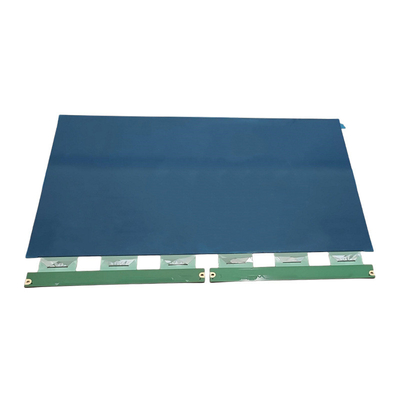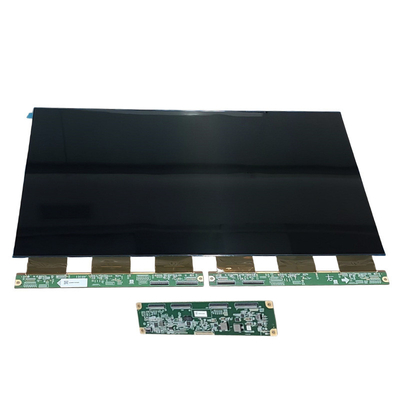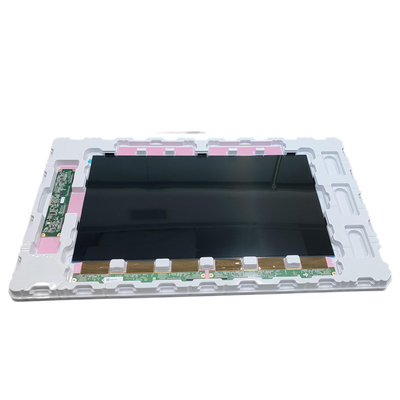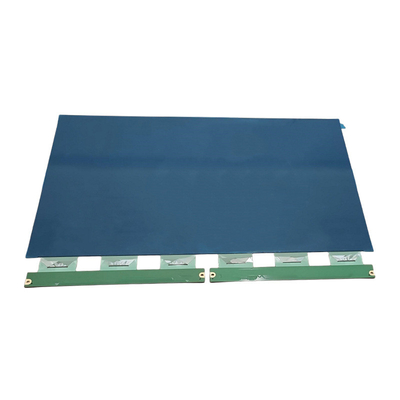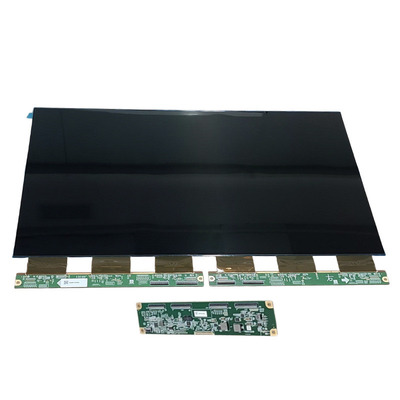27インチ 4K AMOLEDディスプレイモジュール 高解像度 3840RGB×2160 EDPインターフェイス 400C/D

試供品およびクーポンのための私に連絡しなさい。
WhatsApp:0086 18588475571
微信: 0086 18588475571
スカイプ: sales10@aixton.com
心配があれば、私達は24時間のオンライン・ヘルプを提供する。
x| ディスプレイ技術 | amoled表示 | 名前 | AMOLED モジュール |
|---|---|---|---|
| サイズ | 27" | 解像度 | 3840RGB×2160 |
| 亮度 | 400CD/m2 | インターフェース | EDP |
| ハイライト | 3840RGB×2160 AMOLEDディスプレイモジュール,EDPインターフェイス AMOLEDディスプレイモジュール,400C/D AMOLEDディスプレイモジュール |
||
ESHX00UBA62.A は 27 インチ 4K モジュール amoled ディスプレイ、3840RGB×2160 解像度、EDP インターフェース、明るさは 400 Cd/M2 カラー oled ディスプレイ、
A: 製品パラメータ
| 部品番号: | ESHX00UBA62.A |
| 表示モード | 27 インチ AMOLED ディスプレイ |
| 外形サイズ(mm) | 607.66 x 348.18 |
| AA サイズ(mm) | 597.6576 (H) x 336.1824 (V) |
| 表示ドット | 3840RGB×2160 |
| 視野角 | すべて |
| 明るさ | 400 c/d |
| インターフェース | eDP |
| 駆動 IC | / |
B:製品画像
![]()
![]()
![]()
![]()
C: 図面とピン定義
![]()
D: Oled 製品知識
OLED の利点:
OLED セットは LCD より軽量で薄く、高コントラスト、高彩度、低消費電力です
OLED の欠点
AMOLED は LCD および TFT よりも非常に高価であり、寿命は LCD および TFT よりも短いです
E. 会社情報
華新の利点:
1. 内陸都市に位置する工場拠点はコスト効率が高い
2. 品質を安定に保つことができる最先端の新設備
3. 効率性と安定した品質を備えた全自動設備を使用するほとんどのプロセス
4. 20 年以上 LCD 分野で活躍する専門エンジニアと生産リーダー
5. カスタマイズされた製品の自己設計
当社の証明書
1.ISO14001/
2.ISO9001/IATF16949
3.LCD モジュールの SGS
- Huaxin Technology (Enshi)Co.,LTD
- 湖北省恩施
- 設立日:2009
- 主に LCD、LCM、TFT、バックライト、OLED の研究開発、製造、販売を行っているハイテク企業
- LCD には、VA、TN、HTN、STN、FSTN、CSTN およびその他のシリーズが含まれます
- LCM には、COB、TBA、COG、TP、LED バックライトおよびその他のシリーズが含まれます
- 登録資本金:2000 万
- 現在のスタッフ:500+
- RD は 10% を占めます
- QC は 15% を占めます
F:生産能力
| 年間生産 能力 |
2021 (現在) | 2022 (目標) | 2023 (チャレンジ) | 2024 (チャレンジ) | 2025 (チャレンジ) | 備考 | ||
| LCD 生産 能力 |
4.5 | 9 | 9 | 9 | 9 | 単位:千 対数/日 |
||
| LCM 生産 能力 |
70 | 150 | 300 | 450 | 450 | 単位:千 個/日 |
||
| バックライト生産 能力 |
100 | 200 | 300 | 500 | 500 | 単位:千 個/日 |
||
| OLED 生産 能力 |
10 | 20 | 30 | 40 | 50 | 単位:千 個/日 |
||
G: 製品アプリケーション
1.安全ボックスと機器
2.ロックとスマートホーム
3.送信機と時計
4.時計とラジオ
5.コリメータとナビゲーター
H: AMOLED ディスプレイの特性
1.自己発光ピクセル:
2.コントラスト比:
3.色の精度と鮮やかさ:
4.視野角:
5.電力効率:
6.薄さと柔軟性:
7.応答時間:
I:AMOLED ディスプレイの電力効率は、他のディスプレイ技術と比較してどのようになっていますか?
1.消費電力:
- AMOLED ディスプレイはピクセル単位で電力を消費します。つまり、黒または暗いコンテンツを表示するピクセルは非常に少ない電力を消費し、明るいまたは白いコンテンツを表示するピクセルはより多くの電力を消費します。
- 一方、LCD および LED ディスプレイは、表示されるコンテンツに関係なく電力を消費する一定のバックライトを必要とします。
2.コンテンツ依存性:
- AMOLED ディスプレイは、暗いまたは黒い領域が多いコンテンツに対してより電力効率が高く、個々のピクセルをオフにして電力を節約できます。
- LCD および LED ディスプレイは、表示されるコンテンツに関係なく、比較的一定量の電力を消費します。これは、バックライトがアクティブなままであるためです。
3.明るさ制御:
- AMOLED ディスプレイは、個々のピクセルの明るさを動的に調整できるため、低輝度シナリオでより優れた電力効率を実現できます。
- LCD および LED ディスプレイは通常、固定バックライトの明るさがあり、ディスプレイコンテンツが最大輝度を必要としない場合でも、より高い消費電力につながる可能性があります
4.ディスプレイサイズ
- AMOLED ディスプレイは、ピクセル数に応じて消費電力が変化するため、より小さいディスプレイサイズに対してより電力効率が高くなる傾向があります。
- より大きな LCD および LED ディスプレイは、より多くの電力消費型のバックライトを必要とする可能性があり、同じサイズの AMOLED ディスプレイと比較して電力効率が低下する可能性があります。




